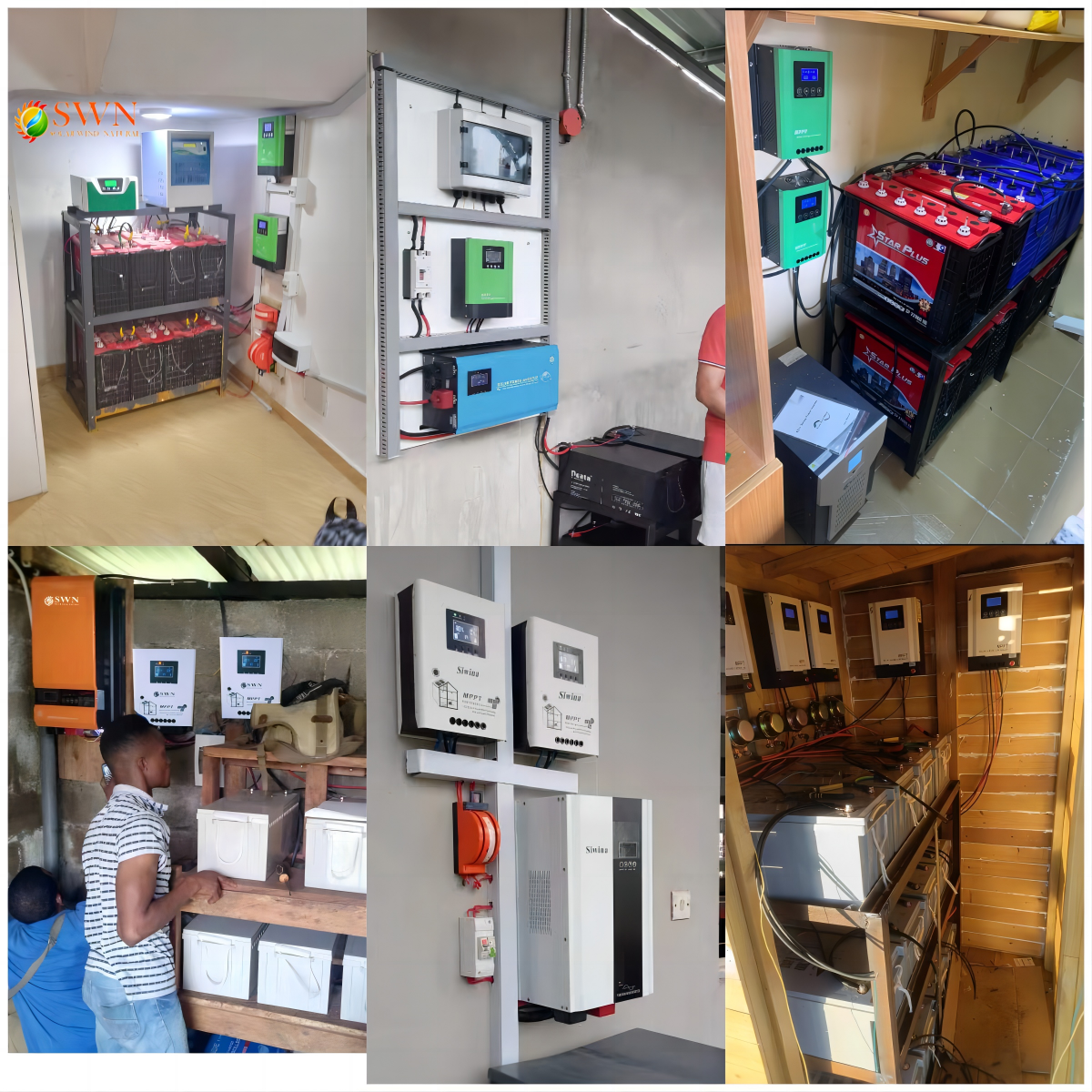What is MPPT solar charger controller?
Many friends want to know why they choose MPPT solar controllers. Today we will share with you Siwina's MPPT solar controllers.
1. What is MPPT solar charger controller?
An MPPT solar charge controller is a type of regulator used in solar power systems to charge batteries. MPPT stands for Maximum Power Point Tracking. Unlike standard PWM charge controllers, MPPT controllers are more sophisticated and efficient. They continuously track the maximum power point of the connected solar panels to deliver the maximum available current for charging batteries.
Some key things to know about MPPT solar charge controllers:
•They convert the higher DC voltage from solar panels down to the lower voltage needed to charge batteries. This conversion allows the panels to operate at their optimal voltage for maximum power output.
•They help maximize energy harvesting from solar panels which can increase charge rates by up to 30% compared to PWM regulators. This means more solar power is captured and used.
•They can handle higher voltage input from larger solar panel arrays that typical PWM controllers cannot. This allows for larger systems and faster charging.
•They provide efficient battery charging through advanced algorithms that monitor battery voltage and temperature. Multiple battery types including lithium-ion and lead-acid batteries can be charged.
•They offer useful monitoring and logging features to track system performance, battery health and solar harvesting. WiFi and ethernet connectivity is available on some models.
•They can be stacked in parallel or series for very large solar power systems up to 10's of kilowatts. As more panels and batteries are added over time, MPPT controllers scale to meet increasing power needs.
•They may cost slightly more upfront but can pay for themselves over the lifetime of a solar system through performance and efficiency gains. For medium to large solar installations, MPPT is typically the best choice.
•Popular models of MPPT controllers offer multiple inputs for solar, utility grid power and generators. They can integrate hybrid on/off-grid systems.
•They help ensure the optimal mix of power sources are used efficiently based on load demand to reduce energy usage and maximize self-consumption of solar where possible.
So in summary, MPPT solar charge controllers are a key component used in most solar power systems today to provide efficient battery charging through active power tracking and conversion. They enable both small and large-scale use of solar energy for on and off-grid power supply.
2. What is the Advantages of MPPT solar controller?
MPPT solar charge controllers offer several important advantages over traditional PWM controllers:
•Maximum Power Point Tracking - MPPT controllers continuously track the maximum power point of the solar panels to extract the maximum available power for charging batteries. This can result in up to 30% more power harvested from the panels compared to PWM controllers.
•Higher solar panel input - This allows the use of larger solar panel arrays connected in series for more output. PWM controllers typically can only handle up to 48V input.
•Faster charging - The increased power harvesting and higher solar input supported by MPPT controllers leads to faster charging of connected batteries. This can decrease generator run time and improve solar self-consumption.
•Smart tracking - Advanced MPPT controllers use algorithms to actively sweep and lock onto the true maximum power point of the solar panels to optimize charging. They can react to changes in sunlight and temperature automatically.
•Battery compatibility - MPPT controllers can charge a wide range of battery types including lithium-ion, lead-acid, gel and AGM batteries. Multiple battery banks with different chemistries can be simultaneously charged.
•Higher efficiency - The nature of MPPT power tracking and DC-to-DC conversion used instead of PWM can achieve higher overall system efficiency and lower heat generation. Efficiency ratings of over 98% are common.
•Monitoring and logging - Many MPPT controllers offer useful monitoring, control, and logging features via digital displays, WiFi, Ethernet or USB. This provides insight into system performance and operation to ensure maximum efficiency.
•Expandability - It is possible to daisy chain or stack multiple MPPT controllers together to create larger PV systems that can grow over time as more panels and batteries are added. Systems over 10-20kW or more can be developed.
So overall, while MPPT solar charge controllers may have a higher upfront cost, they offer performance, efficiency, and scalability benefits over the lifetime of a solar power system that can yield significant energy and cost savings. For most larger-scale installations, MPPT controllers are the ideal choice.If you need to know more MPPT solar controller technical information, please click here: https://swnpower.com/products/49/100a-120a-150a-mppt-solar-charger-controller
Siwina MPPT solar charger controller success case:

.png)
.png)
.png)